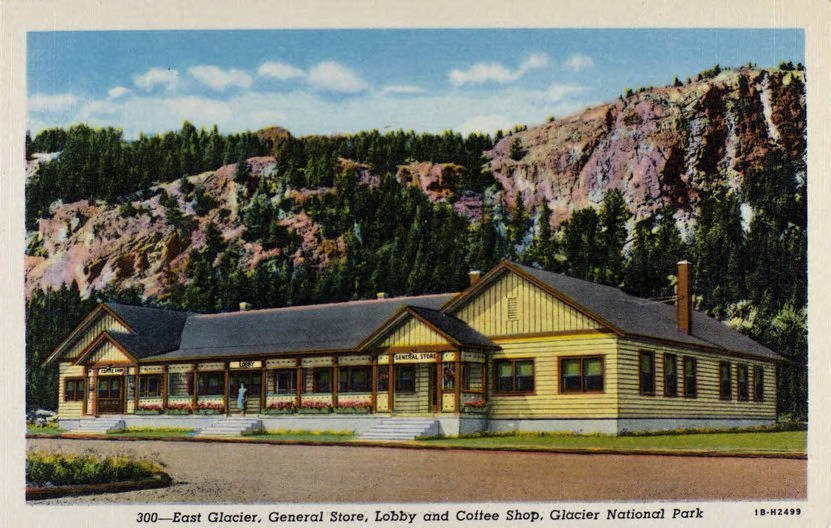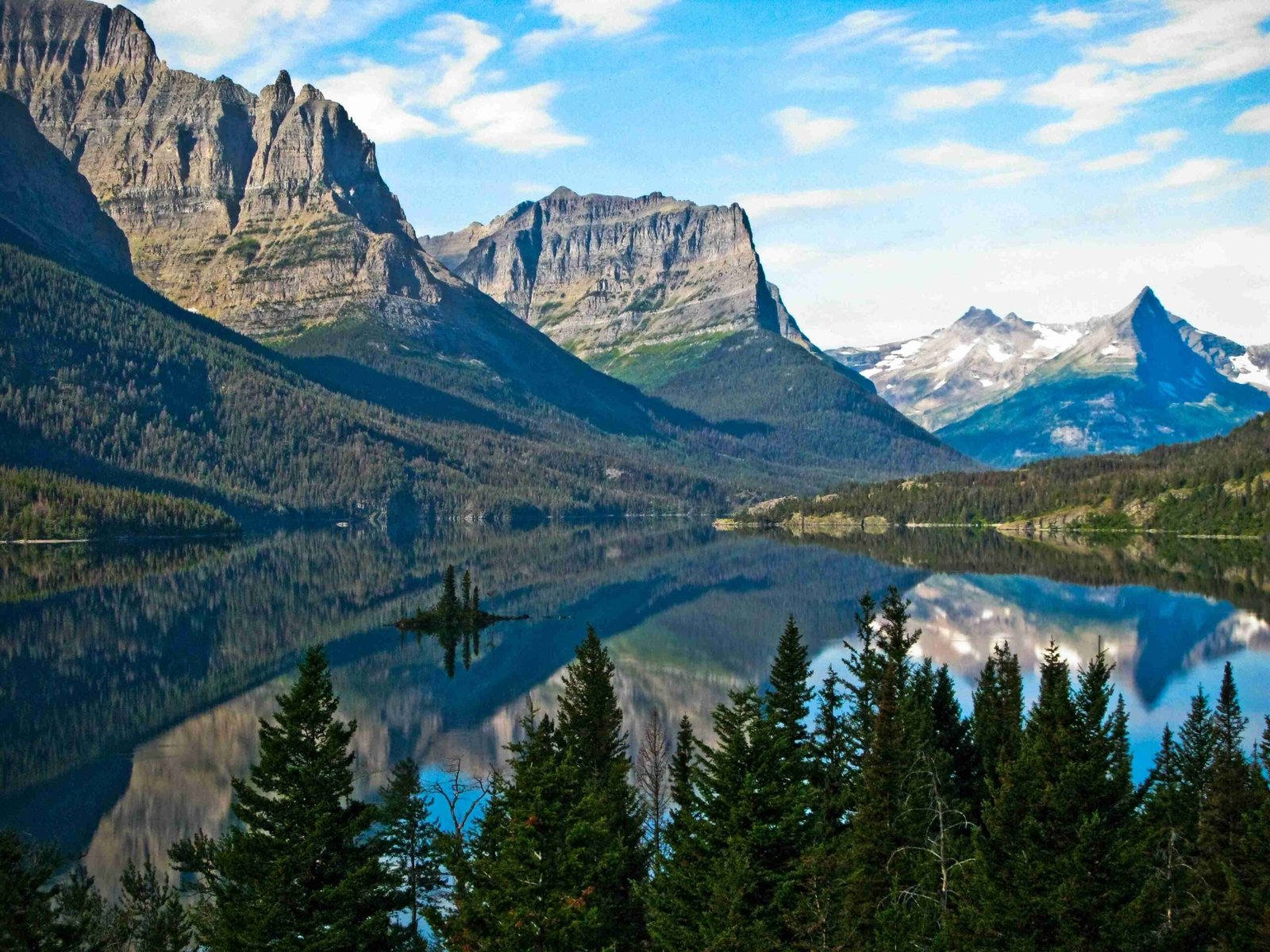Glacier National Park, renowned for its stunning landscapes, transforms into a breathtaking winter wonderland when buried in snow. With an average snowfall of 10 meters at Rogers Pass, the park becomes a haven for winter enthusiasts. From cross-country skiing to snowshoeing, the snow-covered terrain offers unique experiences. However, the heavy snowfall also brings challenges, including avalanche risks and limited accessibility. This article explores the winter magic of Glacier National Park and provides essential information for visitors planning to experience its snow-covered beauty.
What is the Average Snow Depth in Glacier National Park?

Glacier National Park, particularly in its Canadian segment, experiences significant snowfall during winter months. The snow depth varies across different areas of the park, but some regions receive truly impressive amounts of snow:
- Rogers Pass: This key area within Glacier National Park in British Columbia receives an average of 10 metres (approximately 32.5 feet) of snowfall at treeline each winter.
- Mt Fidelity Weather Station: Records show an average yearly snowfall of 1,433cm (473 inches) from 1965 to 2012.
This extensive snow cover transforms the park’s landscape, creating a winter wonderland that attracts snow enthusiasts from around the world. However, it also presents challenges for accessibility:
- Many hiking trails become inaccessible due to deep snow.
- Lower-elevation trails may remain snow-free or have limited snow, especially by late spring.
- The deep snowpack creates ideal conditions for winter activities such as cross-country skiing, snowshoeing, and ski touring.
How Does Snow Affect Accessibility in the Park?

The heavy snowfall in Glacier National Park significantly impacts accessibility:
- Road Closures:
- The Trans-Canada Highway through Rogers Pass can experience closures.
-
An average of 100 hours of closures per year are related to avalanche control.
-
Parking Limitations:
- Some parking areas may be closed or have limited access due to snow removal operations.
-
Visitors should check for updates on parking availability before their trip.
-
Trail Access:
- Many summer hiking trails become inaccessible or dangerous due to deep snow.
-
Winter trails are established for activities like cross-country skiing and snowshoeing.
-
Shuttle Services:
- Limited shuttle services operate during winter.
-
These services primarily focus on maintaining access to essential areas rather than providing comprehensive transportation for recreational activities.
-
Avalanche Control:
- Avalanche control work can lead to temporary closures of certain areas.
- Visitors should always check current conditions and follow park advisories.
What Winter Activities are Available in the Snow-Covered Park?
Despite the challenges posed by heavy snowfall, Glacier National Park offers a wide range of winter activities for visitors:
- Cross-Country Skiing:
- Many trails are suitable for cross-country skiing.
-
Popular areas include Rogers Pass and the Illecillewaet Valley.
-
Snowshoeing:
- Snowshoeing routes are available throughout the park.
-
Lower elevations of Mount Revelstoke and the Illecillewaet Valley are popular spots.
-
Ski Touring:
- Higher elevations above 1600 metres offer excellent conditions for ski touring.
-
March and April are particularly favorable due to rising temperatures and good snow conditions.
-
Winter Photography:
-
The snow-covered landscapes provide stunning opportunities for photography enthusiasts.
-
Wildlife Viewing:
- While more challenging in winter, patient visitors may spot animals adapted to the snowy conditions.
| Activity | Best Locations | Best Time |
|---|---|---|
| Cross-Country Skiing | Rogers Pass, Illecillewaet Valley | December – March |
| Snowshoeing | Mount Revelstoke, Illecillewaet Valley | December – April |
| Ski Touring | Elevations above 1600m | March – April |
| Winter Photography | Throughout the park | All winter |
| Wildlife Viewing | Lower elevations, near unfrozen water sources | Early morning, late afternoon |
What are the Avalanche Risks in Glacier National Park?
Avalanche risk is a significant concern in Glacier National Park during the winter months:
- High-Risk Areas:
- Rogers Pass area is known for high avalanche risk.
-
Steep slopes of the Selkirk Mountain Range are particularly prone to avalanches.
-
Avalanche Activity:
- Approximately 2000 avalanche activity events are recorded each year along the Trans-Canada corridor.
-
About 20 avalanches affect the highway annually.
-
Safety Precautions:
- Visitors should carry avalanche safety equipment (transceivers, probes, shovels) in high-risk areas.
- Checking the latest avalanche forecasts is crucial before any winter activities.
-
Participation in avalanche awareness training is highly recommended.
-
Areas to Avoid:
- Visitors should avoid areas marked as high-risk for avalanches.
-
Follow all safety advisories provided by park authorities.
-
Monitoring and Control:
- Parks Canada conducts regular avalanche monitoring and control measures.
- This can sometimes lead to temporary closures of certain areas for safety reasons.
How Can Visitors Prepare for a Snow-Covered Glacier National Park?
Preparing for a visit to Glacier National Park when it’s buried in snow requires careful planning:
- Check Weather and Conditions:
- Monitor park websites and local weather forecasts regularly.
-
Be aware of potential sudden weather changes in mountainous areas.
-
Proper Gear and Clothing:
- Dress in layers with moisture-wicking base layers.
- Bring waterproof and insulated outer layers.
-
Ensure you have appropriate footwear for snowy conditions.
-
Safety Equipment:
- Carry avalanche safety gear if venturing into backcountry areas.
-
Bring navigation tools like maps and GPS devices.
-
Transportation:
- Use winter tires or chains on your vehicle.
-
Be prepared for potential road closures or delays.
-
Accommodation:
- Book accommodations in advance, as options may be limited in winter.
-
Consider staying in nearby towns if park lodging is unavailable.
-
Activity Planning:
- Research and plan your activities based on current conditions.
-
Consider hiring a guide for unfamiliar or challenging activities.
-
Emergency Preparedness:
- Carry a first aid kit and emergency supplies.
- Inform someone of your plans and expected return time.
By following these preparation steps, visitors can safely enjoy the winter beauty of Glacier National Park when it’s buried in snow.
What are the Unique Experiences of Glacier National Park in Snow?
Experiencing Glacier National Park buried in snow offers unique opportunities:
- Pristine Landscapes:
- Snow-covered peaks and valleys create breathtaking vistas.
-
Frozen waterfalls and ice formations add to the winter magic.
-
Solitude and Tranquility:
- Fewer visitors in winter mean more chances for peaceful experiences.
-
The snow dampens sound, creating a serene atmosphere.
-
Wildlife Viewing:
- Opportunity to see animals in their winter habitats.
-
Possible sightings include mountain goats, bighorn sheep, and winter birds.
-
Night Sky Viewing:
- Clear winter nights offer excellent stargazing opportunities.
-
The snow-covered landscape can enhance the beauty of the night sky.
-
Winter Photography:
- Unique lighting conditions create stunning photo opportunities.
-
Snow-covered landscapes offer a different perspective of familiar park features.
-
Cultural Experiences:
- Learn about the park’s history and its relationship with winter.
-
Discover how local communities have adapted to harsh winter conditions.
-
Challenging Adventures:
- Experience the thrill of navigating through deep snow.
- Test your skills in winter mountaineering or ice climbing (with proper training and guidance).
These unique experiences make visiting Glacier National Park when it’s buried in snow a truly memorable adventure for those willing to brave the winter conditions.
References:
1. https://parks.canada.ca/pn-np/bc/glacier/nature/naturelle-natural/climat
2. https://parks.canada.ca/pn-np/bc/glacier/nature/controle-avalanche-control/fact
3. https://flatheadbeacon.com/2024/03/02/with-scant-snow-glacier-park-reports-sluggish-start-to-winter-visitation/